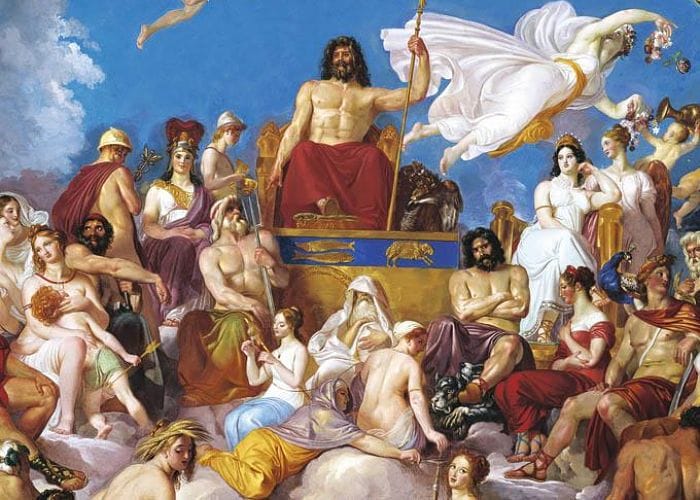We show you the most famous Titans and what role they played in Greek mythology. Discover how they dominated the world and how they fell.

who were the Titans?
Titan, in Greek mythology, any of the children of Uranus (Heaven) and Gaia (Earth) and their descendants. According to Hesiod’s theogony, there were 12 original Titans: the brothers Oceanus, Coeus, Crius, Hyperion, Iapetus, and Cronus and the sisters Thea, Rhea, Themis, Mnemosyne, Phoebe, and Tethys.
At the instigation of Gaia, the Titans rebelled against their father, who had imprisoned them in the underworld (Tartarus). Under the leadership of Cronus they deposed Uranus and established Cronus as their ruler. But one of Cronus’ sons, Zeus, rebelled against his father, and a struggle ensued between them in which most of the Titans sided with Cronus.
Defeat by the Gods
Zeus and his brothers and sisters finally defeated the Titans after 10 years of fierce battles (the Titanomachy). The Titans were then cast out by Zeus and imprisoned in a cavern under Tartarus.
Works and Days of Hesiod preserves the idea of the Titans as the golden, happy and long-lived race. The notion developed further under the Romans who identified Cronus with Saturn; in a golden age of peace and prosperity.
The Titans were a powerful race that ruled the world before the Olympians, at a time of the Golden Age of man. They were immortal giants with incredible strength and knowledge of ancient religious rituals and magic. They are also known as the Elder gods and their abode was on Mount Olympus. In Greek culture they were interpreted as personifications of the Earth (Gia) and Heaven or Heavens (Uranus).
First generation of Titans
The first generation were the direct descendants of Gaia and Uranus, who originally gave birth to Twelve Titans, six males and six females.
The six males were Coeus, Cronus, Crius, Hyperion, Iapetus and Oceanus and the females were Mnemosyne, Phoebe, Rhea, Theia, Themis and Thetis.
Second generation of titans
They rose to power when Cronus, in a plot with his mother and brothers, castrated their father Uranus and took from him the rule of the Cosmos.
During this reign, some brothers and sisters united with each other, while others united with sons and daughters of their relatives and gave birth to the second generation of Titans. Hyperion and Theia gave birth to Eos, Helios and Selene, while Coeus and Phoebe gave birth to Leto and Asteria. Oceanus and Thetis gave birth to Oceanids and Potamoi who are not generally referred to as Titans.

However, an Oceanid Clymene, a daughter of Oceanus and Thetis, helped Iapetus continue with the next generation and gave birth to Atlas, Prometheus, Epimetheus and Menetius. Crius and his half-sister Eurybia, a daughter of Gaia and Pontus, gave birth to Astraeus, Pallas and Persas and eventually Cronus and Rhea gave birth to younger gods, Zeus, Hades, Poseidon, Hera, Hestia and Demeter who rebelled against Cronus and his followers and later defeated them in a ten-year war, known as Titanomachy.

